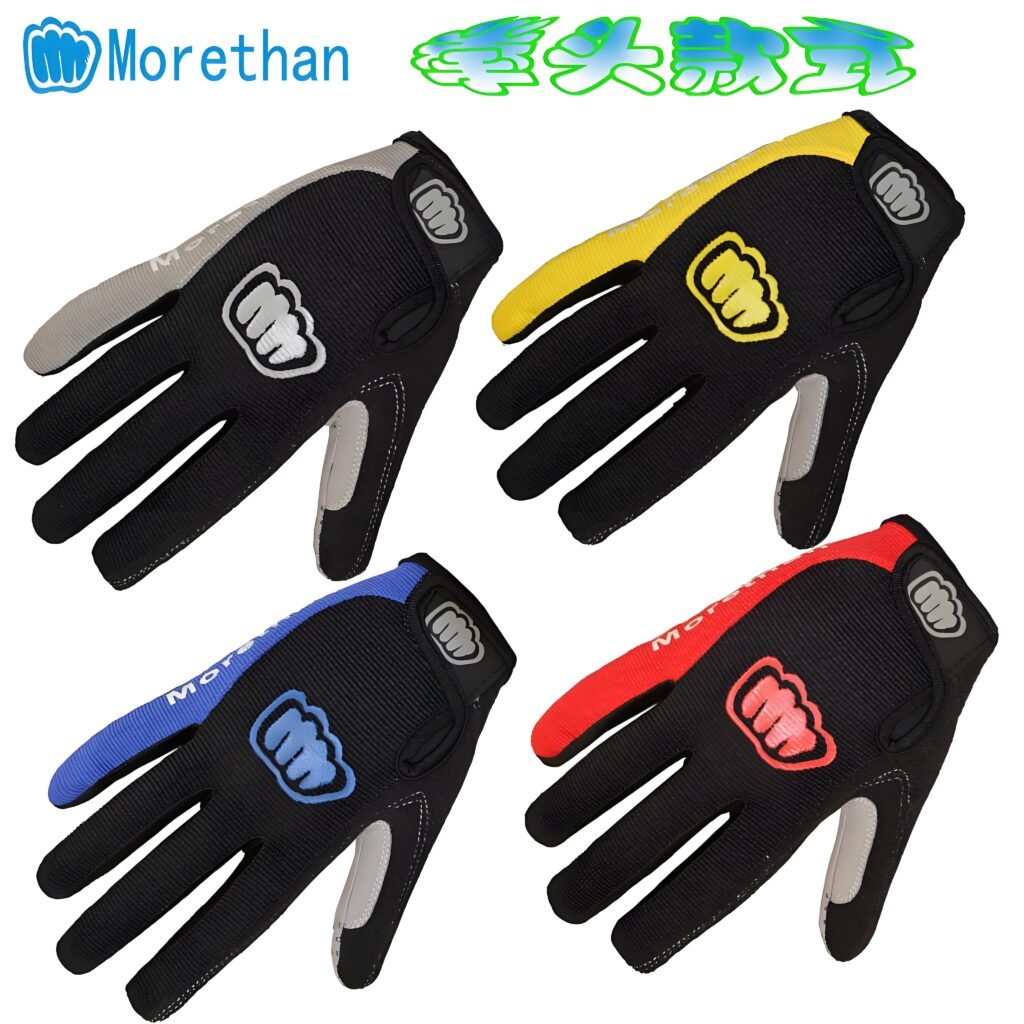PVC Patches Sewn onto Cycling Gloves: A Fusion of Functionality and Style
In the world of cycling accessories, gloves play an integral role in enhancing performance, comfort, and safety. Over the years, manufacturers have continually innovated to add new features and aesthetic elements to cycling gloves. One such innovation is the incorporation of PVC (Polyvinyl Chloride) patches. These patches bring a combination of durability, design versatility, and functional enhancements to cycling gloves, making them a popular choice for both casual riders and professional cyclists. In this article, we delve into the applications, benefits, and design considerations of sewing PVC patches onto cycling gloves, while exploring how this trend is reshaping the cycling industry.

1. Introduction to PVC Patches
PVC patches are flexible, durable, and weather-resistant, making them an ideal choice for products subjected to intense use and environmental challenges. Made from a type of plastic known for its versatility, PVC patches can be customized with intricate designs, vibrant colors, and three-dimensional textures.
Key Features of PVC Patches:
- Durability: Withstand wear and tear, water, and UV exposure.
- Customizable: Support detailed logos, patterns, and branding elements.
- Aesthetic Appeal: Add a premium, textured look to products.
- Ease of Attachment: Can be sewn or glued securely onto various materials.
When applied to cycling gloves, PVC patches not only enhance the gloves’ appearance but also add practical value, such as improved grip and protection.
2. The Importance of Cycling Gloves
Cycling gloves serve multiple purposes, from improving grip and reducing hand fatigue to protecting against abrasions and weather elements. Depending on the type of cycling—be it road biking, mountain biking, or casual commuting—gloves are designed with specific features to meet the needs of riders.
Primary Functions of Cycling Gloves:
- Grip Enhancement: Provide better control over handlebars, especially in wet conditions.
- Shock Absorption: Reduce the impact of vibrations and bumps during rides.
- Hand Protection: Shield hands from blisters, abrasions, and cold weather.
- Sweat Management: Include absorbent materials to wipe away sweat.
- Style and Identity: Serve as a medium for self-expression and branding.
Integrating PVC patches into cycling gloves complements these functions by adding durability, grip, and aesthetic value.
3. Applications of PVC Patches on Cycling Gloves
PVC patches can be applied to cycling gloves in various ways to enhance their utility and appearance.
A. Branding and Logos
PVC patches are commonly used to display brand logos on cycling gloves. Their durability ensures that the branding remains intact despite frequent use and washing.
- Professional Teams: Cycling teams use PVC patches to prominently display sponsor logos.
- Retail Brands: Manufacturers incorporate branded patches to establish product identity.
- Event Memorabilia: Custom gloves with event-specific patches are popular among participants and fans.
B. Grip Improvement
PVC patches with textured surfaces can be strategically placed on the palms and fingers of cycling gloves to enhance grip.
- Anti-Slip Functionality: Provide a secure grip on handlebars, even in wet or muddy conditions.
- Ergonomic Design: Patches can be molded to fit the natural curves of the hand.
C. Reinforcement and Protection
Cycling gloves are often subjected to friction and impact, especially in disciplines like mountain biking. PVC patches can reinforce high-stress areas, increasing the gloves’ longevity.
- Knuckle Protection: Add padded PVC patches to shield knuckles during falls or impacts.
- Wear Resistance: Reinforce areas prone to wear, such as the palms and fingertips.
D. Decorative Elements
Beyond functionality, PVC patches add a stylish touch to cycling gloves.
- Thematic Designs: Incorporate graphics related to cycling, nature, or urban motifs.
- Personalization: Allow riders to customize gloves with initials, symbols, or unique patterns.
- Color Accents: Use vibrant patches to complement or contrast glove colors.
4. Material Compatibility
Sewing PVC patches onto cycling gloves requires compatibility with the base materials used in glove construction. Common materials include leather, synthetic fabrics, and mesh.
A. Leather Gloves
- Provide a sturdy base for sewing PVC patches.
- Ideal for high-end or vintage-style cycling gloves.
B. Synthetic Fabrics
- Lightweight and breathable, making them suitable for modern cycling gloves.
- PVC patches adhere well to synthetic materials like polyester and nylon.
C. Mesh Panels
- Used for ventilation, mesh panels can accommodate smaller, lightweight PVC patches without compromising airflow.
D. Elastic Materials
- Stretchy fabrics require flexible PVC patches to maintain comfort and fit.
5. Advantages of PVC Patches on Cycling Gloves
A. Enhanced Durability
- PVC patches protect gloves from abrasion, increasing their lifespan.
B. Improved Grip
- Textured patches provide additional grip, boosting rider confidence and control.
C. Customizable Aesthetics
- Patches can be tailored to match individual preferences or branding needs.
D. Weather Resistance
- PVC’s inherent resistance to water and UV rays ensures that patches remain vibrant and intact in all conditions.
E. Versatility
- Suitable for various glove styles, from full-fingered mountain biking gloves to fingerless road cycling gloves.
6. Design and Production Process
A. Patch Design
- Concept Development: Collaborate with designers to create detailed patch artwork.
- Material Selection: Choose PVC material thickness and color options.
B. Glove Preparation
- Surface Cleaning: Ensure the glove material is clean and smooth for optimal sewing.
- Placement Marking: Identify patch placement points for balance and functionality.
C. Sewing Techniques
- Thread Selection: Use strong, weather-resistant threads.
- Stitching Patterns: Employ zigzag or double-stitch techniques for secure attachment.
D. Quality Control
- Durability Testing: Verify patch adhesion and flexibility.
- Aesthetic Inspection: Ensure clean edges and consistent stitching.
7. Challenges and Solutions
A. Material Stretching
- Challenge: Elastic glove materials may stretch, distorting the patch.
- Solution: Use stabilizers during sewing to maintain material shape.
B. Patch Rigidity
- Challenge: Rigid patches can reduce glove flexibility.
- Solution: Opt for thinner, more flexible PVC patches.
C. Complex Designs
- Challenge: Intricate patch designs may be difficult to sew.
- Solution: Simplify designs or use advanced sewing equipment.
8. Trends and Innovations
A. Eco-Friendly Materials
- Incorporate recycled PVC to appeal to environmentally conscious consumers.
B. Smart Features
- Add NFC chips or QR codes to PVC patches for interactive functionalities.
C. Glow-in-the-Dark Patches
- Enhance visibility for night riders with luminous designs.
D. Hybrid Designs
- Combine PVC patches with other embellishments, such as embroidery or reflective strips.
9. Conclusion
PVC patches sewn onto cycling gloves represent a perfect marriage of form and function. These patches not only enhance the durability and performance of the gloves but also offer endless opportunities for creative expression. As cycling continues to grow in popularity, the demand for personalized and high-performing accessories will drive further innovation in PVC patch applications. Whether for professional athletes, casual riders, or cycling enthusiasts, PVC-patched gloves are set to remain a staple in the industry, combining practicality with style.


